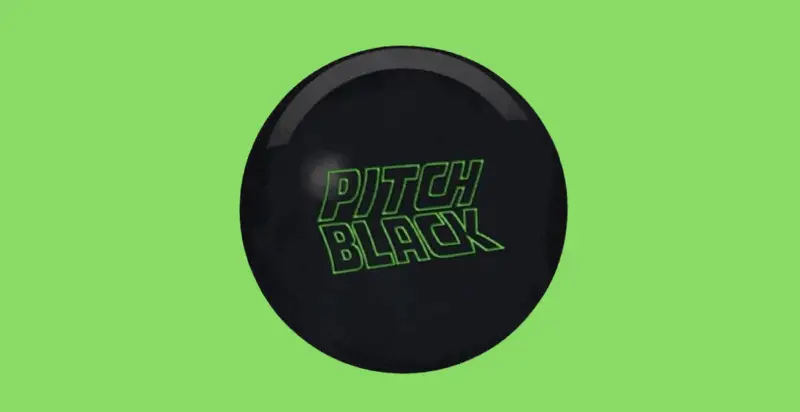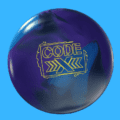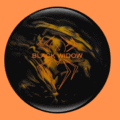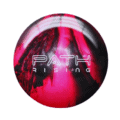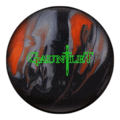Introduction
A lot of the bowling balls knocking around nowadays are covered with reactive resin and other new developments, but there is something to be said for the urethane coverstock balls that were popular about a decade ago. If you prefer or want to try urethane bowling balls but don’t want to use older, outdated models, then we’d suggest you check out the Storm Pitch Black bowling ball, a newer ball that comes with the all the newest bells and whistles whilst having a urethane coverstock.
Here we’ll review the Storm Pitch Black bowling ball, so you know exactly what you’re getting into when purchasing this product. We’ll go through the general perception that this ball has, detail its features, specs, and materials, before finishing off with the advantages and disadvantages that this ball will give you.
Overview
The Pitch Black is one of the newer models from Storm’s Thunder series and is renowned for its solid urethane coverstock that behaves exactly how older urethane balls did. This is what makes the Storm Pitch Black a great option for those who want to go back to the old school, instead of the ever-increasing selection of balls that are made with or made to mimic, the more common reactive resin balls.
This has some demonstrable changes on the motion pattern of the ball as it careens down the lane, giving the ball that characteristically smooth urethane glide and allowing it to move into a hook maneuver much earlier than resin-covered balls. The smoothness with which the Storm Pitch Black travels is only helped by its 1000 grit finish. With urethane balls, they need to begin their hook much earlier than other ball types if they want to pack any kind of punch.
The downsides we ran into with these balls are the usual ones that are common with urethane coverstocks, those being that the ball will lose momentum if used with long or high-volume oil patterns, so using a urethane ball is very much like a sprint and not a marathon. An abundance of oil takes away the friction that the ball needs to really get a good revolution rate going, rendering the ball inert and unlikely to perform well at the pin deck.
Overall, the Storm Pitch Black is a great bowling ball for those who want some more control over its movements, provided that movement is supported by the dry portion of your lane. When used to effect, it has a powerful pin carry and holds the pocket pretty easily. As you can imagine, this urethane ball does its job when the right conditions are met, so it’s not the best option for every lane but, if your local lane is compatible and you want to go back to using urethane, then this is surely the one for you.
Storm Pitch Black Features
If you hadn’t noticed yet, a big unique selling point of the Storm Pitch Black ball is the fact that it returns to the classic urethane coverstocks instead of the resin-based coverstocks that most modern balls are made with. The particular coverstock is actually made with Storm’s own Controll Solid Urethane which, whilst being a modern design, ditches the reactivity of the newer urethane bowling balls floating around and instead reacts like a classic urethane coverstock.
What you wouldn’t have found in the older urethane bowling balls, however, is the Storm Pitch Black’s symmetrical Capacitor core. This core is designed to field a much higher gyration radius with a lower differential than the balls in Storm’s Natural series. This means that bowlers who have higher revolution rates will get the best reactions out of the ball and will end up hitting that pocket easier, especially when the oil patterns are heavier than usual.
Urethane balls tend to require a little more friction to get going, but Storm has this problem literally covered with the Pitch Black’s 1000 grit finish. The finish is rough enough that it’ll make the most of lighter oil patterns, allowing for more motion and so more power when hitting the pin deck. It’s the perfect finish for this kind of ball and what bowlers who use this ball would want to achieve, that being a unique early motion for those dry and medium-dry bowling lanes.
Specifications
- Color: Pitch Black, obviously.
- Coverstock: Symmetrical Capacitor.
- Core: Controll Solid Urethane.
- Finish: 1000 Sanded Grit.
- Recommended Lane Conditions: Dry.
- Radius of Gyration: 2.57.
- Differential: 0.022.
Materials
Given the throwback nature of the Storm Pitch Black, a lot of its materials have been carefully chosen to mimic the older urethane bowling balls. We’ve already mentioned the foremost of these, the Controll Solid Urethane coverstock, which is completely imitating classic urethane balls with its early reaction time and the energy with which it hits the pins.
The symmetrical Capacitor core that the Storm Pitch Black ball has is made from ceramic, making it very effective at delivering impact and back-end performance to annihilate the pins in its path, particularly when going for the pocket.
That’s really all there is to these balls, since their classic design isn’t too complicated. We’d say that less is more since Storm seems to have recreated the urethane balls from the past, using modern tech to improve their efficiency so that they’re a viable option in the modern bowling world.
Advantages
So, let’s talk through what the Storm Pitch Black does well. The Pitch Black exists at the perfect sweet spot of pinpoint accurate control and heavy-hitting potential, allowing for both in equal measure if you’re using it on a lane with short or worn oil patterning. There shouldn’t be many cases where you need to adjust the reactivity of this ball if you’re using it in its natural habitat.
When it is used well, you’ll find that it breaks pretty early and ends its hook before hitting the back of the lane. These early and smooth hooks are all the rage when it comes to urethane bowling balls, and why Storm decided to make a modern equivalent for their own brand.
Whilst they’re best on drier patterns, bowlers with a higher rev count can also squeeze some extra power out of these balls when playing on medium oil patterns too. This is because of the versatility of the 1000 grit finish that the Pitch Black uses, maximizing friction as long as there isn’t too much oil in the ball’s way.
Less on the technical side, we can only say that the Pitch Black really delivers on the feel of a urethane experience and has brought an uncommon design back into the limelight by modernizing it to great effect.
Disadvantages
As for the disadvantages of the Storm Pitch Black, the worst thing you can do with these balls is to take them out of their preferred environment. If you hadn’t gathered already from all of our talk about dry oil patterns, the Pitch Black suffers a lot when used on heavier-oiled lanes or just lanes that have longer patterns. The ball isn’t made to do well here, and so it won’t. Instead it loses most of its length and becomes a glorified, and relatively expensive, paperweight. Depending on your outlook, the fact it does great on dry patterns could be seen as a dependency.
There are also some concerns that come with returning to an older bowling ball style. There was, after all, a reason that urethane bowling balls became less and less common over time, and the modern tech of the Storm Pitch Black can only cover so much. The hook needs to be started early so, if you prefer a long and winding hook that lasts all the way to the back of the lane, then you’ll want another ball.
Where higher rev bowlers can get some great strength from this ball, lower rev bowlers will find no such luck, particularly on medium-oiled lanes. The efficacy of the Storm Pitch Black is dampened by a lower revolution count, so if that’s you then there’s little chance that you can get the best performance out of your bowl.
If you hadn’t noticed, the big factor between both the successes and the failures of the Storm Pitch Black is oil. The oil environment that the ball is used on changes how it plays in a drastic way, with it performing great on drier surfaces and being bogged down and flagging on more-oiled surfaces.
Final Thoughts
The Storm Pitch Black can be difficult to pin down. On certain oil patterns, it excels and on others, it fails completely, so it really depends on the environment at your favorite bowling alley. It doesn’t have the same hook potential as reactive resin balls on the market, though we’d expect that you knew that if you’re seeking out urethane alternatives.
It's a very context-specific ball that knows what it is and what it isn’t, delivering a classic urethane experience along with all of the benefits and shortcomings that come with that. It prioritizes ball control over flashy twists and other finesse maneuvers, also favoring raw hitting strength over reactivity and agility.
With all that said, the deciding factor ultimately comes down to you. If you know what you’re getting into and can play off of the strengths of a true urethane bowling ball, then you’ll find everything you’re looking for in the Storm pitch Black.

I’m Lia and I love playing games. I started this site to share things with friends and they encouraged me to post more and now I’m trying to share things with the world – indoor and outdoor sports, and board and bar games. I write about things like Bocce, Croquet, Billiards, Darts and other fun ways to enjoy time with your friends and family!

